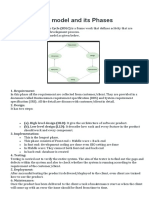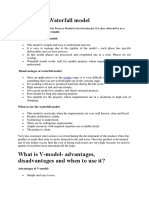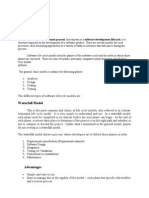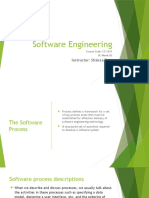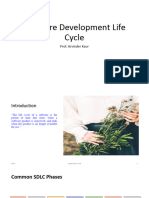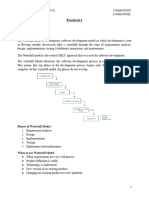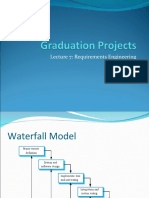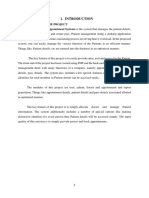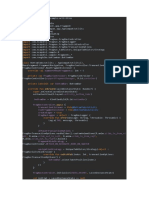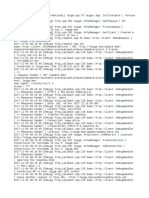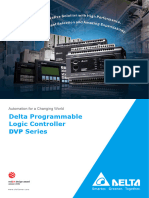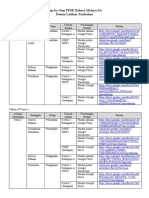0% found this document useful (0 votes)
76 views40 pages1 Software Development and Process Model
The document discusses various software development process models including:
- Big-Bang model which has little planning and is useful for small academic projects but has high risks.
- Waterfall model which follows sequential phases of specification, design, implementation, verification and evolution without overlap but has high risks and doesn't allow for changes.
- Incremental model which combines waterfall model elements iteratively to deliver working software in increments and get customer feedback.
- Agile model which is iterative and incremental, focusing on customer satisfaction through quick delivery of working software in short iterations through customer collaboration.
The document provides advantages and disadvantages of each model to understand their applicability to different types of projects. Process models discussed balance risks
Uploaded by
Rana HafeezCopyright
© © All Rights Reserved
We take content rights seriously. If you suspect this is your content, claim it here.
Available Formats
Download as PPTX, PDF, TXT or read online on Scribd
0% found this document useful (0 votes)
76 views40 pages1 Software Development and Process Model
The document discusses various software development process models including:
- Big-Bang model which has little planning and is useful for small academic projects but has high risks.
- Waterfall model which follows sequential phases of specification, design, implementation, verification and evolution without overlap but has high risks and doesn't allow for changes.
- Incremental model which combines waterfall model elements iteratively to deliver working software in increments and get customer feedback.
- Agile model which is iterative and incremental, focusing on customer satisfaction through quick delivery of working software in short iterations through customer collaboration.
The document provides advantages and disadvantages of each model to understand their applicability to different types of projects. Process models discussed balance risks
Uploaded by
Rana HafeezCopyright
© © All Rights Reserved
We take content rights seriously. If you suspect this is your content, claim it here.
Available Formats
Download as PPTX, PDF, TXT or read online on Scribd
/ 40







